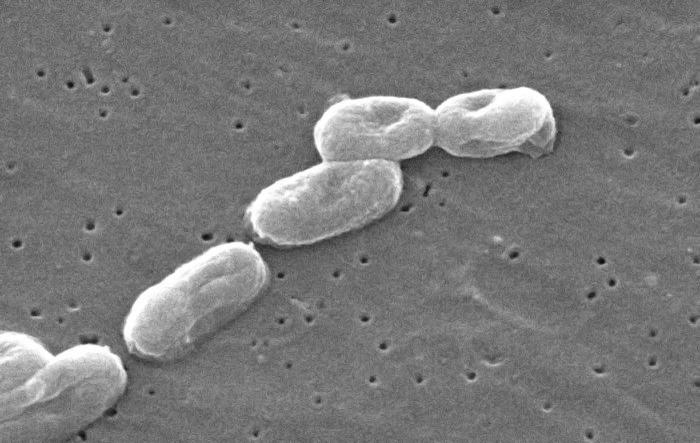In a follow-up to reports last month that the Centers for Disease Control and Prevention (CDC) and the Food and Drug Administration (FDA) were investigating a multistate outbreak of Burkholderia cepacia (B. cepacia complex), federal health officials now released more details on the investigation.

Image/Janice Haney Carr
As of July 8, 47 B. cepacia complex cases have been confirmed by molecular typing to match one of two outbreak strain types identified from healthcare facilities in five states. Reports of possible cases from additional states are currently being investigated.
CDC has confirmed that two samples of unused oral liquid docusate product received from one of the affected hospitals have tested positive for B. cepacia complex. Further testing is being conducted to determine if bacteria from these samples match the outbreak strains.
FDA is currently testing multiple liquid docusate products that are epidemiologically linked to reported B. cepacia complex cases. To date, CDC has confirmed one product as having B. cepacia complex growth; however, because of epidemiologic links, CDC is concerned about potential contamination of multiple liquid docusate products, pending FDA’s ongoing investigation of shared ingredients in the products in question.
At this time, CDC continues to recommend that clinicians not use any liquid docusate product as a stool softener or for any other medical purpose. This recommendation is now expanded to all patient populations. If an oral liquid docusate stool softener is medically necessary, alternative medicines should be used.
CDC urges healthcare providers and laboratories to remain on alert for infections caused by B. cepacia complex occurring among non-cystic fibrosis (CF) patients and should inform infection prevention staff immediately when these infections are identified. In addition, although infections caused by B. cepacia complex are known to occur among patients with CF, any clusters of such infections should be reported. Cases and clusters should be reported to state or local public health authorities.
Related:


One thought on “Burkholderia cepacia outbreak affects 47 people in five states, Do not use any liquid docusate product”